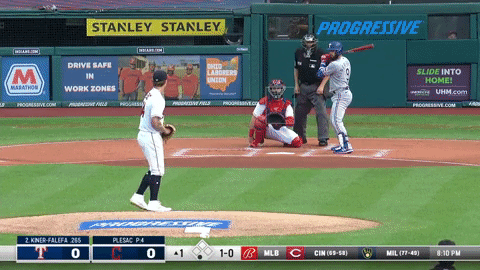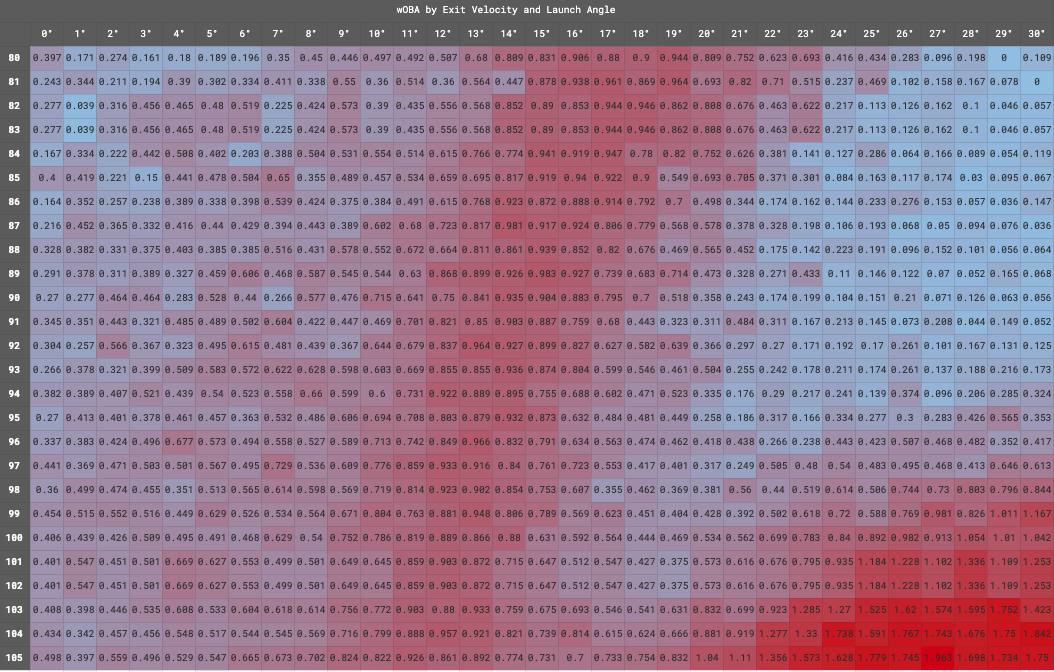As we all know, baseball is a game of averages. Whether you prefer the weighted-on-base variety, as I do, or the more traditional hits-over-at-bats type, player performance tends to regress toward the mean. This makes it possible to project performance with a high level of accuracy year in and year out. Every year, though, we hear about players who have made changes to their game over the offseason, and, every year, fans dream up new ceilings for their new favorite sleeper. And that’s good a thing! One of the reasons baseball is exciting is that every year we see players defy the odds, and every year we try to guess who’s next. With a new approach, there’s a new variable in our analysis, which makes the beginning of the season especially exciting.
One such storyline this offseason is that of Isiah Kiner-Falefa. The Yankee’s new infielder came to the team along with Josh Donaldson in a trade with Twins that would fundamentally change the look of New York’s infield. But Kiner-Falefa’s offseason was eventful in more ways than one. Upon his arrival to the big apple, Lindsey Adler of The Athletic reported that the catcher-turned-shortstop had spent his offseason re-tooling his swing alongside Justin Turner and Turner’s personal hitting coach, Doug Latta. Latta famously helped the already veteran Turner to turn his career around in 2014 and become one of the best hitters in the game.
Entering spring training, it became clear immediately that Kiner-Falefa had overhauled his stance and swing. Early videos had Twitter users discussing how the new swing was reminiscent of Justin Turner’s. Kiner-Falefa’s results in spring training were excellent. He finished his tour in the Grapefruit League with a .379/.419/.500 slash line. But what can expect from Kiner-Falefa’s new swing over the course of 162 regular-season games?
Swing Mechanics
Justin Turner attributes his late-career success to a newfound ability to consistently hit the ball in the air. Although we don’t have Statcast metrics from before 2015, available batted ball metrics back him up. Prior to working with Doug Latta, Justin Turner posted a 52.28 ground ball percentage in an average season. Afterward, that number sits at 33.59. It’s no surprise that Turner has become the poster child for the launch-angle revolution which has been so heavily covered in recent years.
Interestingly enough, though, Doug Latta’s approach to coaching isn’t data-driven. Latta worries that a focus on creating specific launch angles or reaching specific velocities can be a detriment to player development. Instead, he focuses on athleticism, tempo, and what he calls “contact point”—the point within a given swing where the bat meets the ball. For Latta, this means amplifying a player’s ability to move freely and easily through the zone, amplifying a player’s chances to find a successful contact point. “If you take the right swing, you’re able to elevate the ball.”
Taking a look at Kiner-Falefa’s swing this Spring Training and comparing it to his 2021 swing, we see a dramatic change in his mechanics:
IKF Swing comparison: 2022 vs. 2021


In 2021, Kiner-Falefa uses a slight toe tap, while in 2022, we see a dramatic leg kick. In 2021, his hands sit above his shoulder before he loads up. In 2022, his hands sit out in front of his chest, and his load up comes more from the legs. By the eyes, these changes make Kiner-Falefa look more fluid at the plate. His swing is less rigid and his weight shifts seamlessly along with his hip rotation. All of these changes seem to allow Kiner-Falefa to get out in front of the ball, rather then keeping his weight on his back leg—a key piece of the puzzle according to Turner and something that Turner says Kiner-Falefa was working on this off-season. With the right timing, this new approach should put Kiner-Falefa in a better position to drive the ball, rather then staying back and getting inside of the pitch.
Batted Balls
Why does all of this matter? To illustrate, let’s look at wOBA by exit velocity (EV) and launch angle (LA). Kiner-Falefa is not a slugger. His average exit velocity and hard hit percentage are consistently below league average. Coupled with a low average LA over his career, it’s no surprise that the shortstop has posted well-below-average offensive numbers over the years. But a change in approach could give Kiner-Falefa a chance at greater success. The heat map below illustrates the effect that even a small increase in launch angle can have on a player’s offensive production. Each cell represents the league-average wOBA on a given combination of EV and LA, with higher wOBAs shaded in red and lower ones shaded in blue:

What stands out most obviously is the band red that attends launch angles in the 10-20° even on balls that aren’t hit hard. While Kiner-Falefa may never consistently reach the bottom right corner of the chart, even a small change in launch angle could pay dividends for his future production. The key for Kiner-Falefa will be lifting the ball in the air, shifting his batted ball profile into that thin red band. If done consistently, Kiner-Falefa could see a significant change in his ability to hit the ball over the infield and, as a consequence, his ability to take extra bases. Moreover, Kiner-Falefa’s above-average speed should allow him to take advantage.
Defining Success
We don’t have sufficient data to gauge whether Kiner-Falefa is seeing these kinds of results. Although he found success in Spring Training, his 27 batted-ball events had a 4.7° average LA, in line with his career norms. In addition, we don’t have the ability to portend how these mechanical changes might affect other aspects of his approach. Will this new swing bring more swing and miss? Will his average EV remain constant or will his new mechanics bring an increase in EV as well? After all, scouting reports have always graded Kiner-Falefa’s raw power higher than his in-game performance. Could these changes help him unlock his potential? Only time will tell.
Rather than wish-casting, it’s worth asking what success could look like for Kiner-Falefa. After all, we hear about players making changes every year, and we have no reason to suspect that Kiner-Falefa will find Turner-esque levels of success. If we assume that Kiner-Falefa’s profile will look largely the same moving forward, we can compare his results to other players with similar metrics who differ in their ability to lift the ball. I propose Whit Merrifield as a good candidate for comparison:
Photo by Cliff Welch/Icon Sportswire | Adapted by Michael Packard

